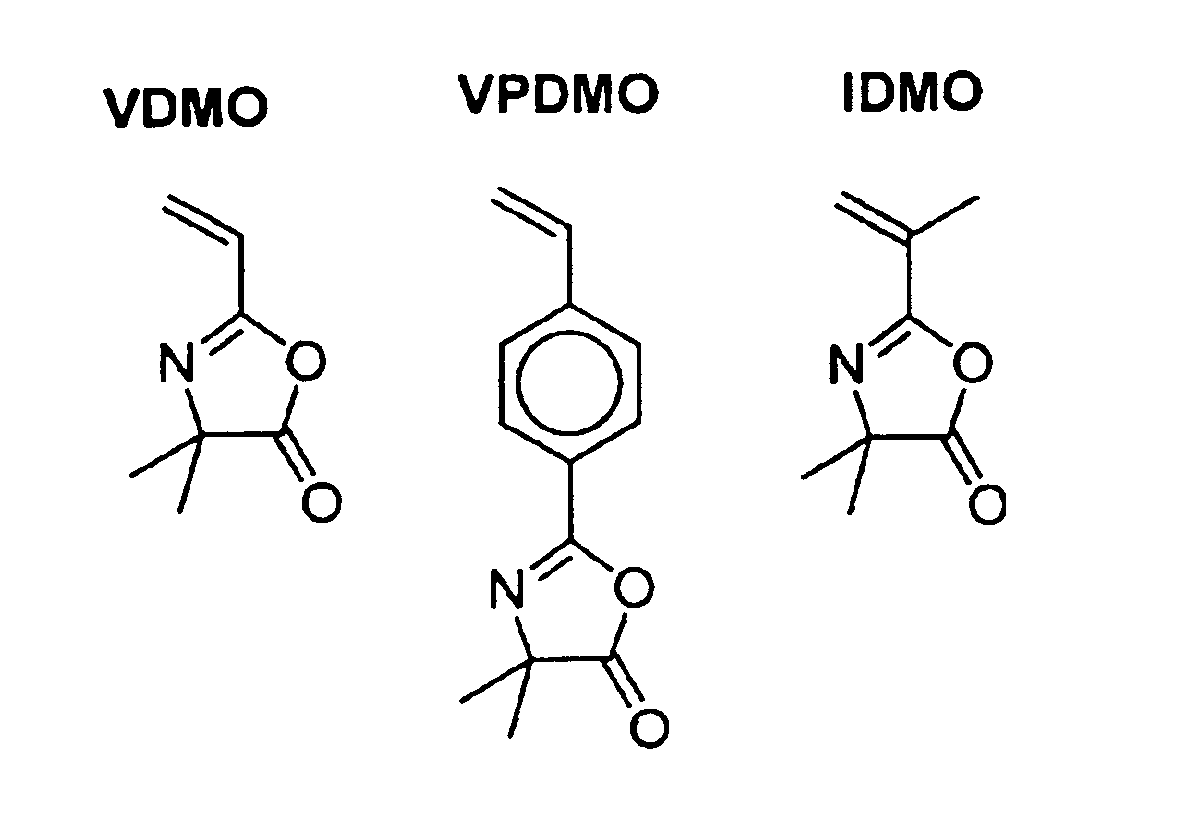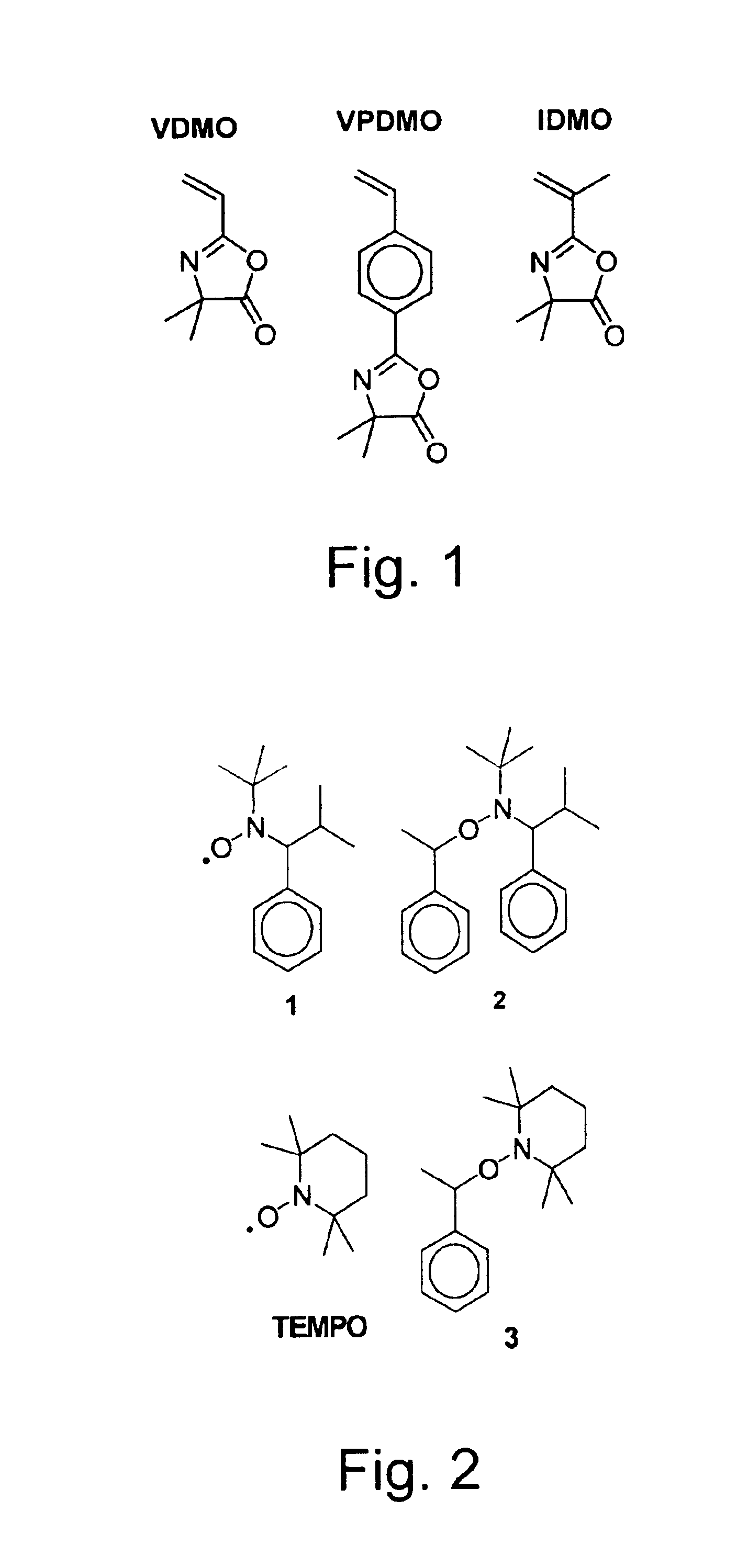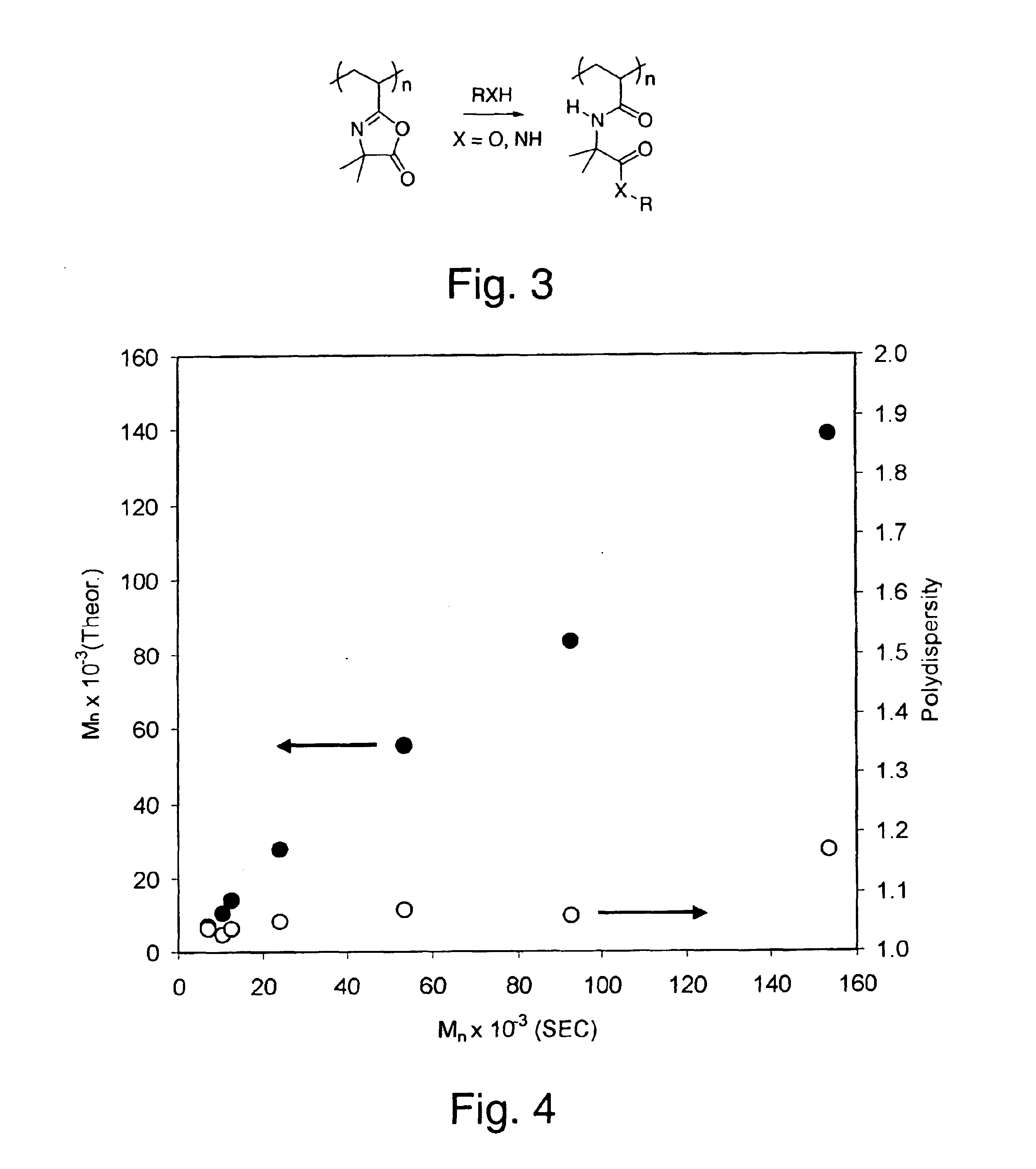Compositions and methods of vinyl oxazolone polymerization
- Summary
- Abstract
- Description
- Claims
- Application Information
AI Technical Summary
Benefits of technology
Problems solved by technology
Method used
Image
Examples
example 1
Bulk Homopolymerization of VDMO
[0087]We initially examined the bulk homopolymerization of VDMO (DP=250) and its dependence on both time and temperature, using nitroxide 1 and alkoxyamine 2 (FIG. 2) to explore the polymerization of vinyl-functionalized oxazolones, based in part upon exceptional versatility and relative ease of synthesis of these substrate compounds. A solution of VDMO (4.00 g, 29.0 mmol), alkoxyamine 2 (36.7 mg, 0.116 mmol) and nitroxide 1 (1.3 mg, 5.8 mmol) was degassed by three freeze / pump / thaw cycles and sealed under nitrogen. The solution was stirred at 123° C. for 12 h. The clear, solid plug was then dissolved in chloroform and precipitated into hexanes (2L). The fine, white precipitate was filtered, washed with additional hexanes, and dried under vacuum to give the desired poly(VDMO) as a very fine white powder (3.28 g, 81%). Mn=31.5 kDa, PD=1.04.
[0088]Using alkoxyamine 2 alone as unimolecular initiator, an appreciable degree of control is preserved throughout ...
example 2
Polymerization of VDMO Using Initiator 3
[0091]For comparison, bulk homopolymerization of VDMO was performed at 123° C. in the presence of TEMPO-derived unimolecular 3 (FIG. 2), both with and without excess TEMPO (5% relative to 3). At high conversions, there is a noticeably lesser degree of control compared to the polymerization with alkoxyamine 2, with polydispersities typically in the range of 1.20-1.30 (see Table 1). Interestingly, as the polymerization of VDMO in the presence of 3 approaches full conversion (both with and without excess TEMPO), no high molecular weight shoulder is observed in the SEC trace. However, the apparent absence of this shoulder may simply be the result of its having become obscured beneath the relatively broad main peak of the polymer.
example 3
Preparation of Polymers Having Varied Molecular Weights
[0092]The living character of nitroxide-mediated polymerization provides the capability for easy tuning of the desired molecular weight by merely varying the ratio of monomer to initiator. To demonstrate this, a series of polymerization reactions were performed at 123° C. using varying VDMO:initiator ratios (ranging from 50:1 to 1000:1). In each case, the polymerization was stopped after 4 h at approximately 90% conversion. As shown in FIG. 3, excellent control over molecular weight is obtained up to approximately 100 kDa, as illustrated by both a linear relationship between theoretical and experimental molecular weights and polydispersity values consistently under 1.10. At higher target molecular weights, the product polydispersities are slightly increased, ranging from about 1.10 to 1.20.
PUM
| Property | Measurement | Unit |
|---|---|---|
| Temperature | aaaaa | aaaaa |
| Temperature | aaaaa | aaaaa |
| Temperature | aaaaa | aaaaa |
Abstract
Description
Claims
Application Information
 Login to View More
Login to View More - R&D
- Intellectual Property
- Life Sciences
- Materials
- Tech Scout
- Unparalleled Data Quality
- Higher Quality Content
- 60% Fewer Hallucinations
Browse by: Latest US Patents, China's latest patents, Technical Efficacy Thesaurus, Application Domain, Technology Topic, Popular Technical Reports.
© 2025 PatSnap. All rights reserved.Legal|Privacy policy|Modern Slavery Act Transparency Statement|Sitemap|About US| Contact US: help@patsnap.com



